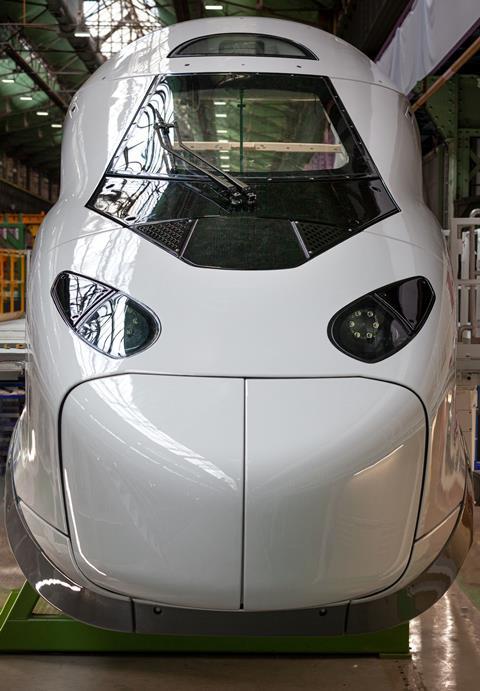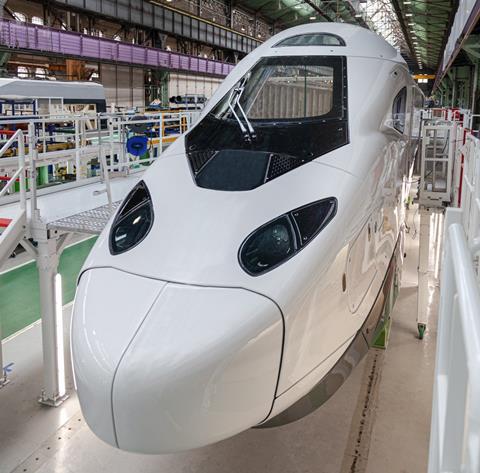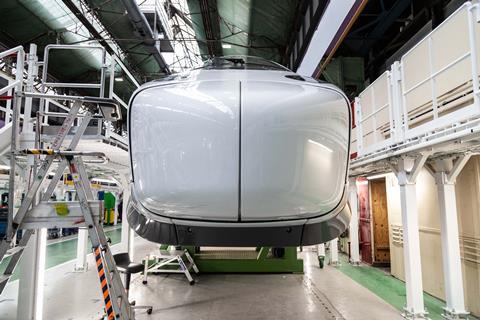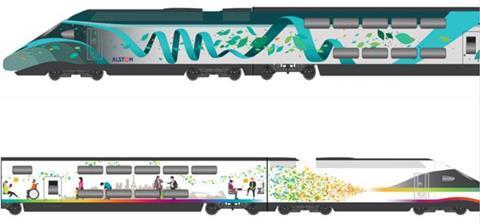
FRANCE: The first completed power car for SNCF’s future TGV M trainsets was unveiled at Alstom’s Belfort workshops on May 26, with an event attended by SNCF Voyageurs Chairman & CEO Christophe Fanichet, Voyages SNCF Managing Director Alain Krakovitch and the President of Alstom France Jean-Baptiste Eyméoud.
The national operator has ordered a fleet of 100 trainsets from Alstom under a €2∙7bn contract signed in July 2018. The manufacturer is currently assembling two pre-series units for test running and verification. The power cars are being built at Belfort and the double-deck articulated trailers at the Aytré plant in La Rochelle.
The two trains are scheduled to enter commercial service in June 2024, coinciding with the Olympic and Paralympic Games in Paris and other cities. Trial running is expected to start towards the end of this year, and one set is due to visit the Velim test track during 2022. Formal delivery is due in ‘winter 2023’ to allow driver training ahead of the start of passenger service.
Shorter and streamlined

Described by SNCF as its fourth-generation TGV, the 320 km/h trainsets feature a shorter power car similar to that used for the Avelia Liberty high speed trains being supplied to Amtrak. These will be fitted with regenerative braking able to return power to the catenary, along with eco-driving assistance. Improvements to the aerodynamic shape of the nose are also expected to contribute to an overall energy saving of around 20% compared to current TGVs.

The power cars will operate with seven, eight or nine articulated double-deck trailers, allowing the operator to adjust train lengths to match market demand.
The modular interior of the trailer cars is also intended to be flexible, allowing vehicles to be reconfigured between first and second class, fitted with bicycle racks and extra luggage space, or equipped with high density seating for use on low-cost Ouigo services. Maximum capacity of a nine-car TGV M is expected to be 740 seats compared to 600 in an eight-car TGV Duplex. Onboard services will include wi-fi and real-time passenger information, with the data backbone also supporting condition-based preventive maintenance.
According to SNCF, the new trains will be the first TGVs to achieve 100% accessibility, having been designed in close collaboration with wheelchair user groups. The aim is to permit fully autonomous boarding for people with reduced mobility.

The event on May 26 also saw the announcement of the winners of the internal competition launched last September, under which employees of SNCF and Alstom France were invited to design a livery for the two pre-series trains. The selected designs are to be produced as laminate vinyls to be installed once the units are ready for testing.

















